Xian City Wall Scenic Area
Xi'an City Wall Scenic Area and National AAAAA Tourist Scenic Area are the four-in-one Scenic Area around the city with the theme of the ancient city wall of Xi'an, including the moat, the forest belt around the city (including the outer edge of the city river) and Shuncheng Road. It is the most complete preserved ancient Chinese city wall architecture.
The total planning area of the scenic spot is about 4530820 square meters, including 611575 square meters of the moat, 1920133 square meters of the forest belt around the city, 359112 square meters of the city wall and 1640,000 square meters of Shuncheng Road.
The city wall of Xi'an was built in Hongwu, Ming Dynasty from 7 to 11 years (1374-1378), and was expanded on the basis of Chang'an City in Tang Dynasty and Fengyuan City in Yuan Dynasty. The outline is closed rectangular. The wall is 12 meters high, 18 meters wide at the bottom, 15 meters wide at the top, 2590 meters long at the east, 2631.2 meters long at the west, 3441.6 meters long at the south, 3241 meters long at the north and 11.9 kilometers long at the total circumference.
The city wall of Xi'an includes a series of military facilities such as moat, suspension bridge, gate, arrow tower, main building, corner building, enemy building, parapet wall, stack and so on, which constitute a tight and complete military defense system. City gates are opened on all sides of east, west, north and south. They are named Changle in the east, Anding in the west, Yongning in the South and Anyuan in the north.
geographical position
Xi'an City Wall Scenic Area, located in the central area of Xi'an City, is located in Guanzhong Basin in the middle of Weihe River Basin. Its longitude is 107.40 degrees to 109.49 degrees in the East and latitude is 33.42 degrees to 34.45 degrees in the north. Xi'an City in Shaanxi Province is bordered by Weihe River and Loess Plateau in the north and Qinling Mountains in the south; Weihe River and Bayuan Mountain in the East and Huaxian County, Weinan City, Shangzhou City and Luonan County in the east; Taibai Mountain and Qinghua Loess Plateau in the west, Meixian County and Taibai County in the west; the main ridge of Qinling Mountain in the south to the north is bordered by Foping County, Ningshan County and Zhashui County in the north; Weihe River in the north and Weihe River in the Northeast are bordered by Xianyang District. Yangling District is adjacent to Sanyuan, Jingyang, Xingping, Wugong, Fufeng and Fuping counties (cities).
Climatic characteristics
Xi'an City Wall Scenic Area is temperate monsoon climate. Climate characteristics: warm and dry in spring, less precipitation, rapid and unstable temperature rise, windy and sandy weather; hot and rainy in summer, with drought; cool and humid in autumn, the temperature drops quickly; cold and dry in winter, low temperature, rare rain and snow. The annual average temperature is 13.7 C and the annual average precipitation is 340-1240 mm.
Historical evolution
The city wall of Xi'an Ming Dynasty was built on the basis of the imperial city of Sui and Tang Dynasty (1374-1378) from the seventh to eleven years of Hongwu Ming Dynasty. Around the strategic system of "defense", the city wall is thicker than the height, stable as a mountain, and the top of the wall can be used for sports cars and drills. From the Sui and Tang dynasties, the ancient city wall of Xi'an has a history of more than 1400 years, and from the beginning of the Ming Dynasty, the expansion of the city has a history of more than 600 years, which is one of the most complete preserved ancient city walls in China.
In the first year of Tianxue in the late Tang Dynasty (904), the Youguo Army stationed in Chang'an made Han Jian rebuild the city because it was difficult to defend. When Tianhunian was rebuilt, it abandoned the outer walls and palace cities of Chang'an, only renovated the imperial city, closed the three gates of Suzaku, Anfu and Yanxi, and opened the basalt gate to defend, but did not expand or renovate the city walls. After five dynasties, the post-Tang, post-Jin, post-Han and Xi'an were called Fengyuan City, which was an important town in Northwest China.
In the second year of Hongwu in the Ming Dynasty (1369), General Xu Da led his army from Shanxi to Shaanxi, and the guard fled. Xu Da occupied Fengyuan City. The Ming Dynasty changed Fengyuan Road to Liangan Prefecture, which was the beginning of the name of Xi'an.
During the three years (1370) to eleven years (1378) of Hongwu in Ming Dynasty, Xi'an formally built the city wall. The walls are rammed in layers of loess. There are 5 984 mounds on the outside and 5 984 mounds on the inside and outside of the top of the wall, but no mounds on the inside. There is a horse face every 120 meters around the outer wall of the city wall, totaling 98, and piers are built. Each corner of the city has a corner building, of which the southwest corner is circular.
In the second year of Longqing in the Ming Dynasty (1568), Zhang Hui, governor of Shaanxi Province, presided over the renovation, and built green bricks on the outer walls and top surfaces of the city walls, making the Tucheng a brick city for the first time.
In the ninth year of Chongzhen in the Ming Dynasty (1636), Sun Chuanting, governor of Shaanxi Province, built the Siguan Tucheng Wall. There are four gates: Changle Gate in the east, Anding Gate in the west, Yongning Gate in the South and Anyuan Gate in the north. Each gate has three levels: gate building, Arrow Building and main building. The gate is outside, the arrow tower is in the middle, and the main building is inside. The wall between the arrow tower and the main building is Wengcheng. The whole city wall constitutes a tight defensive system, with a wide moat outside the city.
In the Qing Dynasty, Xi'an City Wall was repaired 12 times. Among them, Bi Yuan, governor of Shaanxi Province, presided over the largest project in the forty-sixth year of Qianlong (1781). The outer wall of the city wall was thickened with bricks. The inner wall of the city wall was built with green bricks every 40 to 60 meters to remove rainwater from the top.
Development and construction
Since 1983, Xi'an has begun the construction of Xi'an Circum-city Park, strengthening and repairing the city wall, restoring Quexinglou, enemy building and South Gate Gate Building, erecting river banks with stones, opening museums in city buildings, arrow towers, corner towers and enemy buildings, and increasing tourist facilities. In order to increase the ornamentality of the ancient city pool, the high-rise buildings near the city wall were demolished. There were many squares and green spaces built inside and outside the main city gates, and Shuncheng lanes under the inner wall were opened.
On December 16, 2006, Xi'an City Wall Scenic Spot held a "Bell Ring in the Flourishing Age, Pray for Chang'an" - 2007 Xi'an City Wall New Year Bell Ring and Pray for Blessing Activity at 22:30 on December 31.
On October 22, 2007, "Shanhaidan Cup 2007 Chongyang Xi'an Senior Citizen Walking" large-scale event was successfully held in Xi'an City Wall.
On October 01, 2009, Xi'an City Wall Scenic Spot held the Mid-Autumn Festival Moon Festival 2009, which is called "Landing on the City Wall and Moonlight Home Banquet".
On October 3, 2009, the City Wall scenic spot in Xi'an held a live broadcasting and connecting activity of CCTV "Cheers for the Motherland - National Large-scale Television Action" in Shaanxi Province.
On November 3, 2010, the Xi'an City Wall Scenic Area Management Committee held the 2010 "Xi'an City Wall Proximity" event in Nanmen.
Since 2013, the South Gate area of Xi'an City Wall has been comprehensively renovated, including the protection and display of cultural relics in the South Gate and the landscape renovation of the moat. Meanwhile, Nanmen Cultural Etiquette Square, Yuecheng Museum Square and Wengcheng Cultural Demonstration Square will be constructed. The landscape renovation project of the moat takes the construction of the 3 km long water area from Jianguomen to Zhuqumen section of the moat as the main line, and builds a new waterscape system. At the same time, two garden-style supporting service facilities, pine garden and pomegranate garden, six bridge landscape renovation and eight land-and-water wharfs construction were implemented to form a complete water tour scenic spot of Xi'an city wall.
On January 5, 2014, Xi'an City Wall Scenic Spot held a series of activities entitled "Xi'an City Wall New Spring Cultural Spring 2014".
On June 1, 2014, the Nanmen City Wall Scenic Area of Xi'an held a children's cultural event entitled "Academic History, Culture, I am a small lecturer".
From February 7 to March 22, 2015, Xi'an City Wall Scenic Area held a 44-day "Tangdu Shangyuan Night City 2015 City Wall New Year Lantern Festival".
On February 15, 2015, General Secretary Xi inspected the city wall and praised it as a world-class treasure.
On May 15, 2015, Xi Jinping and Moody had dinner on the wall of Xi'an.
On July 10, 2015, Xi'an City Wall "Summer Night Run" opened.
On October 17, 2018, the Ministry of Culture and Tourism publicized nine national 5A-level scenic spots, including the City Wall scenic spots in Xi'an.
Practical information
Admission ticket
Dengcheng 54 yuan. Children under 1.2 meters and elderly people over 70 years old (vouchers) are free, and children between 1.2-1.4 meters, primary and secondary school students and 65-70 years old (vouchers) are half-price concessions.
Rental fee: 40 yuan per 100 minutes for single bicycle, 80 yuan per 100 minutes for double bicycle and 300 yuan for deposit.
Take a sightseeing electric car around the city wall for 80 yuan per person.
Xi'an City Wall and Xi'an Stele Forest Museum sell joint package tickets. After purchasing the package tickets, tourists can visit the above two scenic spots with a face value of 100 yuan.
Opening Hours
South Gate and North Gate: 8:00-22:00;
Including light gate: 8:00-17:30;
The remaining doors: 8:00-18:00 from April 1 to April 30, 8:00-19:00 from May 1 to October 31, and 8:00-18:00 from November 1 to March 31, the following year.
Traffic information
Train
Beijing to Xi'an: T58/T55, Z151, Z75, T7, K629, T231, Z43, K1363, Z19
Datong to Xi'an: 2671
Zhengzhou to Xi'an: K1354/K1351, K244/K241, 1150/1147, K1026/K1027, K2186/K2187
transit
Routes 22, 23, 27, 29, 33, 37, 47, 602, 612, 704
metro
Yongning Gate Station on Line 2
From the Republic of China to the founding of New China, there were 12 new gates, including Chaoyang Gate in the east, Zhongshan Gate in the north, Liberation Gate, Shangwu Gate, Shangde Gate in the north, Yuxiang Gate in the west, and Hanguang Gate, Wushimen Gate, Zhulao Gate, Peace Gate, Wenchangmen and Jianguomen in the south.

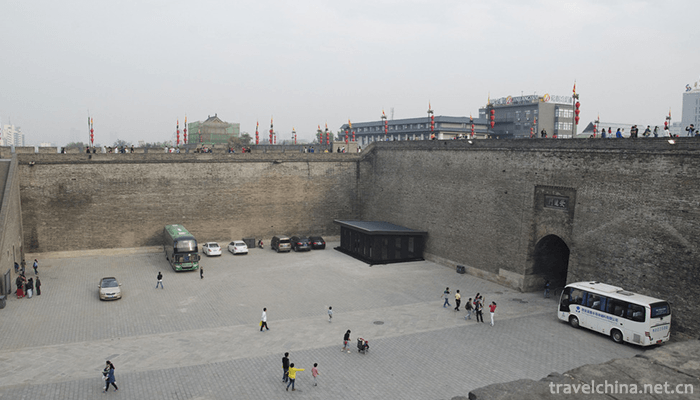
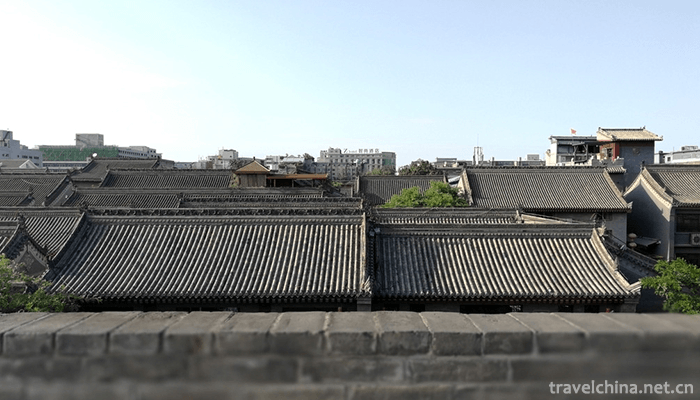

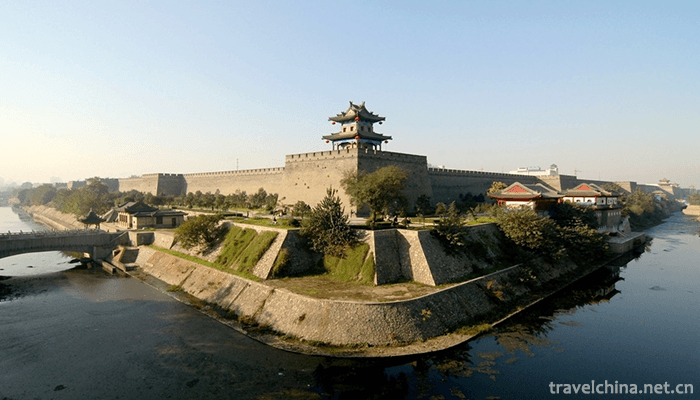

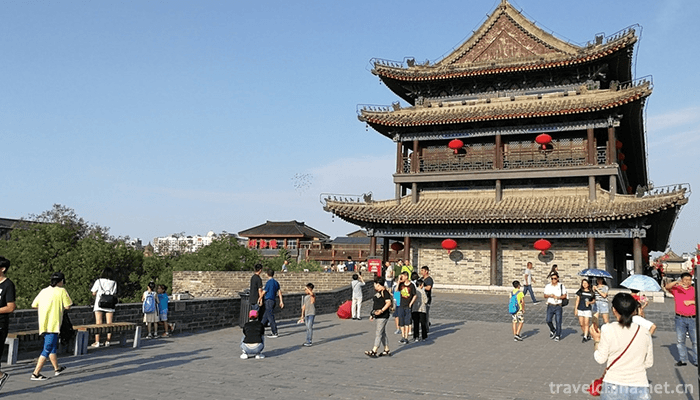
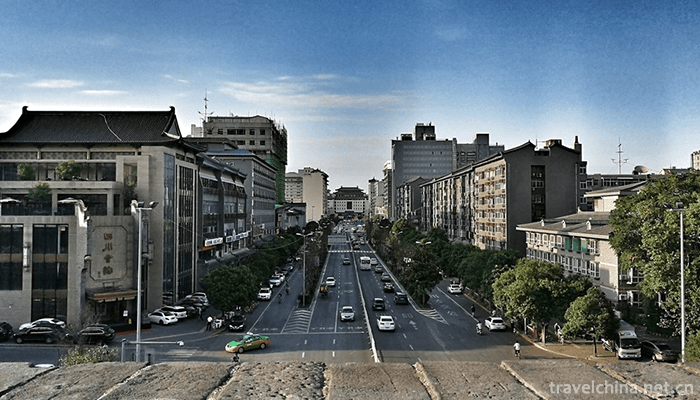
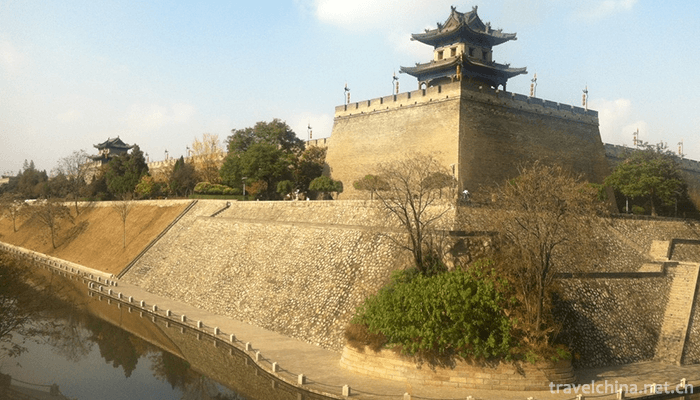
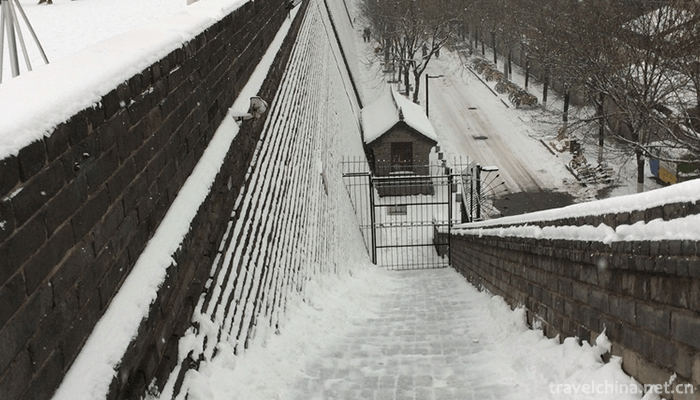
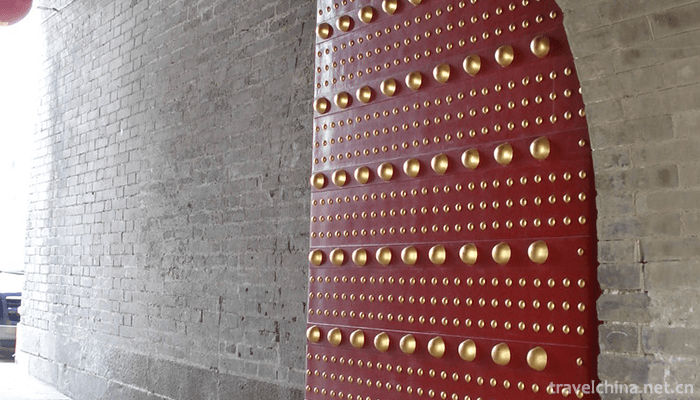
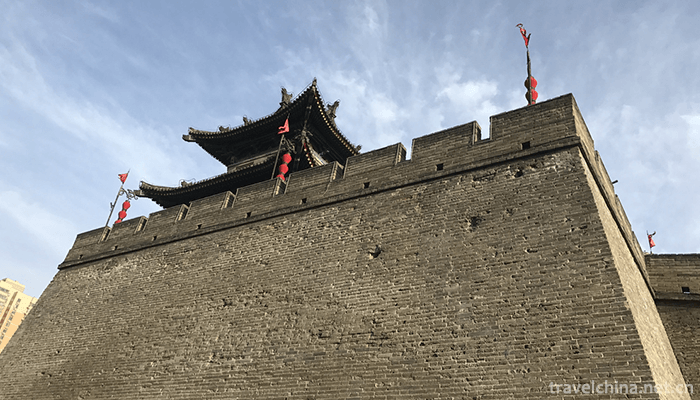
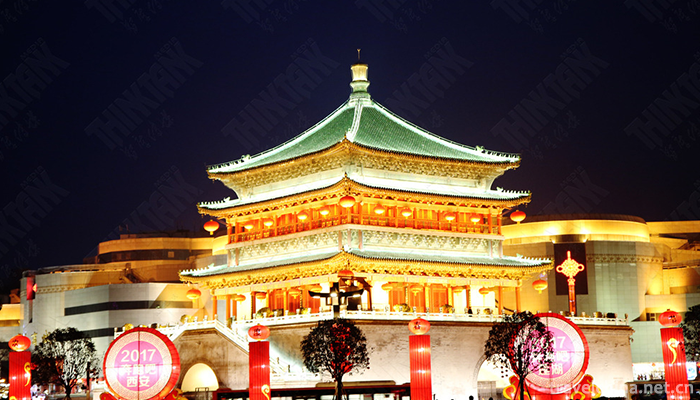
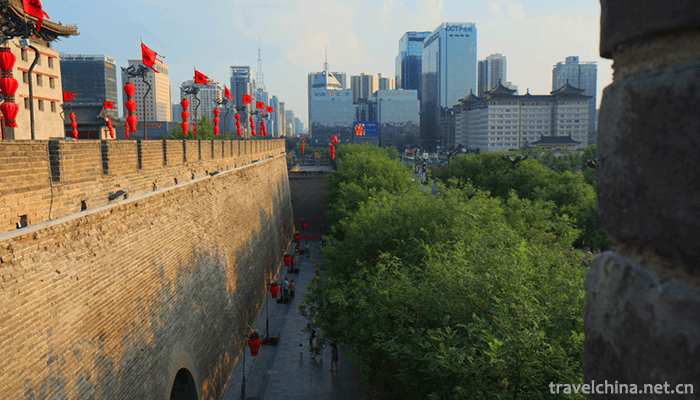
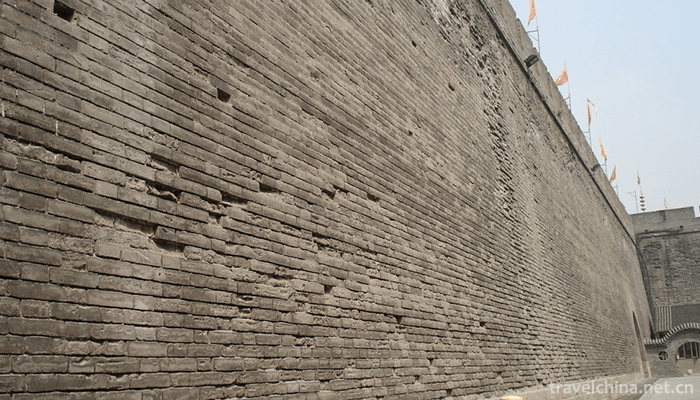
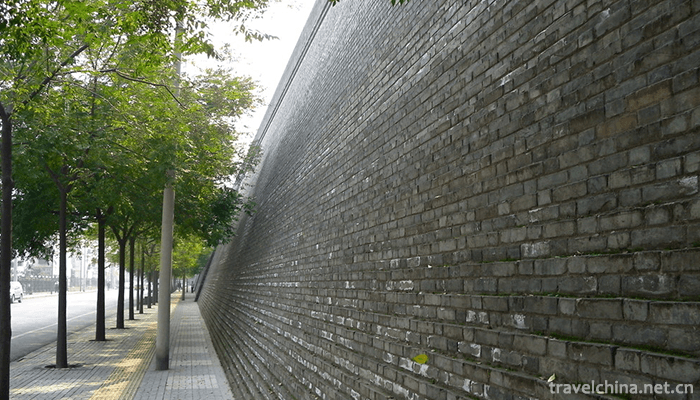
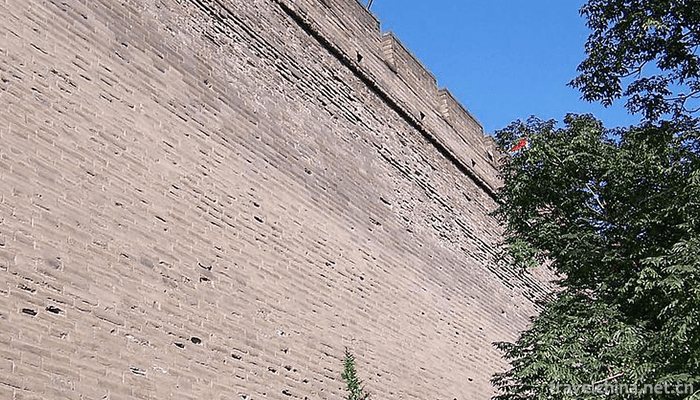
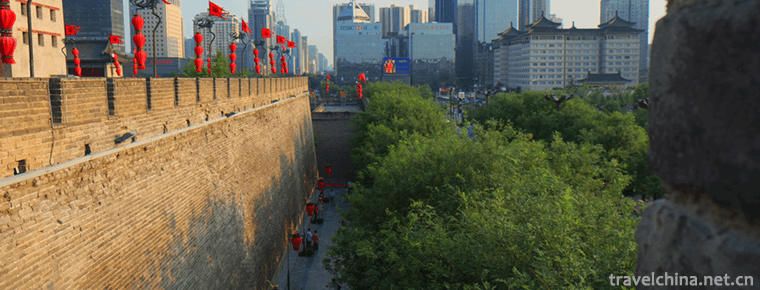
-
1.Yin Ruins Scenic Area (Yin xu)
Yin Ruins, formerly known as "Northern Mongolia" , is the ruins of the capital city in the late Shang Dynasty of China, located in Anyang City, Henan Province
Time 2018-12-09 -
2.Mount Mangdang Han culture tourism scenic spot
Located in Yongcheng City, Henan Province, Mangdao Mountain Han Culture Tourist Area is a national AAAAA-level scenic spot which integrates landscape sightseeing, cultural appreciation and ecological
Time 2018-12-09 -
3.Yueyang Tower and Junshan Island Scenic Area
Junshan Island, formerly known as Dongting Mountain, Xiangshan Mountain and Youyuan Mountain, is located in the territory of Yueyang City. It is an island in Dongting Lake, 800 li away from Yueyang To
Time 2018-12-12 -
4.Shanghai Zoo
Shanghai Zoo is located at 2381 Hongqiao Road, Changning District, Shanghai, which is close to Shanghai Hongqiao International Airport. Founded in 1954, originally known as the West Suburb Park. Shang
Time 2018-12-19 -
5.Shanghai Flower Port
Shanghai Flower Harbor is a new town in southeastern Pudong along the dripping lake of the East China Sea. It has a unique geographical location. Opened in September 2002
Time 2018-12-19 -
6.China Maritime Museum
China Navigation Museum, fully known as "Shanghai China Navigation Museum", is the first national navigational Museum approved by the State Council. It is co-constructed by the Ministry of T
Time 2018-12-22 -
7.Baishuizhai Scenic Area
Baishuizhai Scenic Spot is located in Paitan Town, Zengcheng District, with an area of about 170 meters. The Tropic of Cancer passes through it. It is known as the magnificent Emerald on the Tropic
Time 2019-01-02 -
8.Qinzhou Sanniangwan Tourist Area
Sanniang Bay is one of the ten best scenic spots in Qinzhou, Guangxi. It is the home of Chinese white dolphins. Located on the coast of the Beibu Gulf in southern China,
Time 2019-02-07 -
9.Eight claw Fish Powder Pueraria Decoction
500 grams of Pueraria Thunb, 50 grams of octopus, 400 grams of pork legs, four candied dates, and 1/6 peel.
Time 2019-03-27 -
10.Material liao qi
Material wares are traditional handicraft products in Beijing. It is a traditional handicraft made of glass strips. There was no direct glass-making industry in Beijing. The materials used were collec
Time 2019-05-13 -
11.Legend of Mount Tai
Taishan legend is one of the folk legends in Shandong Province. According to legend, the history of the Theocracy of Taishan God in charge of life and death can be traced back to the pre-Qin period. A
Time 2019-06-18 -
12.Gu Kaizhi
Gu Kai Zhi (348 to 409 years), the word is long, the small character tiger. Han nationality , Jin Ling Wuxi people (now Wuxi, Jiangsu province). Outstanding painter, painting theorist and poet. Becaus
Time 2019-09-07